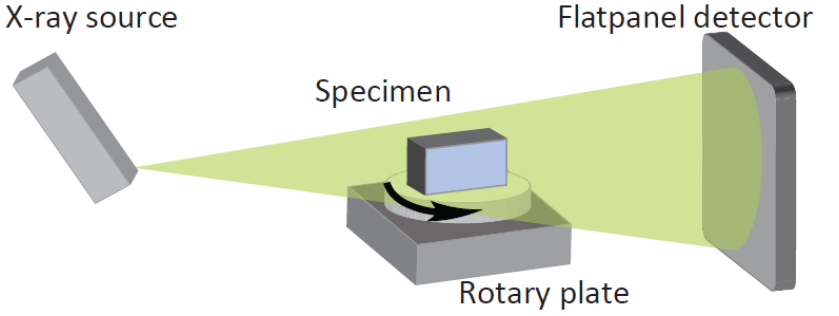
3D X-ray computed tomography
- Details
- Published: Monday, 02 April 2012 17:08

Laboratory 3D X-ray computed tomography (XCT) is the most promising method for nondestructive and fully three dimensional characterizations of nanostructures. However due to conceptual limitations, commercial laboratory XCT devices are still an order of magnitude or more above the desired specifications in order to characterize 100 nm or smaller structures within a sufficient field of view.
The principle of common industrial XCT, also referred to as cone beam XCT, is explained as follows: At each angular position of a 360 degree turn, a 2D projection image of the specimen is obtained, which represents the X-ray attenuation of the specimen in the form of greyvalue images. The complete series of projection images allows to reconstruct the three dimensional distribution of the spatial X-ray attenuation, resulting in a volumetric greyvalue dataset of the scanned area. In recent years, industrial XCT devices were continuously advanced in order to achieve higher resolutions, facilitating measurements with increasing levels of detail. This trend makes the technology highly attractive for the nondestructive characterization of nano-scaled structures.












 3D X-ray computed tomography
3D X-ray computed tomography